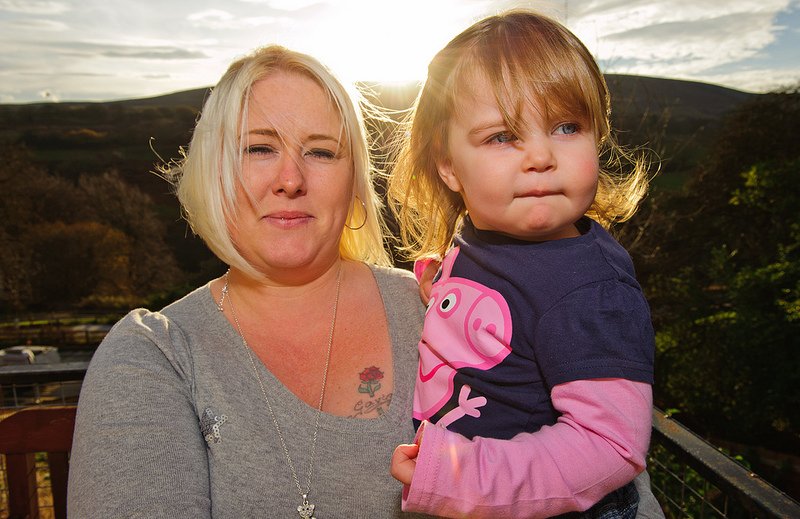 Poverty
Poverty 
The publication this Thursday of the official Households Below Average Income statistics is the most important for half a dozen years. It is likely to spark a debate about the future of child poverty and the government’s responsibility for it.
These new statistics will apply to the financial year 2010-11. As the Coalition government took office just a few weeks into this year, the statistics largely reflect the effect of the former government’s policies. The picture these figures paint is, in effect, Labour’s legacy.
What should we be looking for when the Department for Work and Pensions publishes these statistics on Thursday morning?
The level of average income
The way child poverty is measured depends on average (median) household income. The poverty threshold is set at 60% of the median income for the current year. Incomes themselves are net of income and council taxes, and adjusted for the size of the household.
Though it is a key part of the story, the level of average income usually attracts little attention. This year could be different.
The big question here is whether average household income, after allowing for inflation, has fallen. Since it has not fallen, at least by more than £1 a week, since 1992, this would be eye-catching. We know that earnings have stagnated, working hours have been cut and returns on household savings have been small. All these will impact on average household income. A fall is a real possibility.
The child poverty rate
This is usually the lead statistic, sometimes referred to as the “relative” measure. In the previous year, the child poverty rate (measured before housing costs and benefits have been deducted from incomes) stood at 20%. So the obvious first question is: is the latest child poverty rate up, down or the same as before?
20% was the lowest rate since 1985 – and down by almost a third on the peak (of 29%) in the early 1990s. But progress in recent years has previously been slight, with 2009/10 being the first to be lower than 2004/5. While year-on-year movements in this statistic must always be treated with caution, 20% or below could be seen as acceptable outcome, especially in the wake of the recession.
Given the possibility of a fall in median income, there is a chance that poverty may fall at least in part because the threshold against which it is measured is itself lower. In that case, it is also worth looking at “absolute” poverty.
“Absolute” poverty
The publication will also include an “absolute” measure of poverty. This is a misleading description as this threshold is no less “relative” than one set against this year’s income distribution. Rather than measuring the number of people below an income threshold in the current year, it measures the number below an arbitrary threshold: for the moment – 1998/99, albeit uprated in line with inflation. A better description might be a “fixed” measure.
Such a measure is, though, included in the Child Poverty Act and a useful supporting statistic in any case. In the last set of figures, 11% of children lived in a household whose income was below 60% of the 1998/99 median. The figure in 1998/99 itself was 26%, so the fall has been substantial.
This fall was greater than the fall on the relative measure. This is normal in a growing economy where average incomes rise faster than inflation. However, with inflation higher in recent years, but average incomes stagnating, it is possible that this year’s figures could show a rise in poverty on the fixed measure and fall on the relative measure.
That would not be a good result. A fall on the relative measure can only be seen as an unarguably “good thing” if there is a fall on the fixed measure too.
Other trends
Behind the headline figures published on Thursday lies a wealth of data. For instance, the pensioner poverty rate, at 18% (in 2009/10) was the lowest in nearly 30 years. Has this fall continued?
Although families without work are very likely to be in poverty, it has been the case since 2005 that more than half of all children in poverty in the UK live with an adult who is in work. With record numbers of working people able only to find part-time work, will Thursday’s statistics show a further rise in this proportion?
What this means for tackling poverty
The debate that might be sparked by these numbers will likely concentrate on two things: whether the 2020 targets for child poverty are sensible; and whether the child poverty measures are the right ones.
The 2020 targets are certainly tough. The single most important of them is that the relative child poverty rate should fall to 10%. To get there, the rate needs to fall by about 1% a year. Since this is what was achieved between the late 1990s and the 2004/5, progress at such a rate is possible.
10% is also only a fraction lower than the rate that was consistently recorded in the 1960s and 1970s. Compared with Tony Blair’s original idea of abolishing child poverty by 2020 – something that was outside of all experience – the Child Poverty Act introduced a dose of realism. It is hard to see how anything in Thursday’s numbers could give grounds for abandoning what was agreed so recently with all-party support.
Even if the aspiration to do something about child poverty is retained, some may use Thursday to argue that the measure of it should be changed – and formal targets abandoned.
So how good are these poverty measures based on low income? Of course they are not perfect. Given the overwhelming importance of money in modern society, neither are they ill-conceived, obviously wrong or even misleading. Not to have enough money – and the poverty line falls well below the independent Minimum Income Standard – leaves a household with no other resources severely deprived.
While well-resourced academic studies can afford to take a more sophisticated view of poverty, ‘technical’ criticisms here serve as a smokescreen for doing away with the idea that government should be held to account for what is happening on poverty. If that accountability is important, Thursday’s official statistics, handled sensibly, are the best thing we have.
Peter Kenway is Director of the New Policy Institute
Tom MacInnes is Research director at the New Policy Institute


